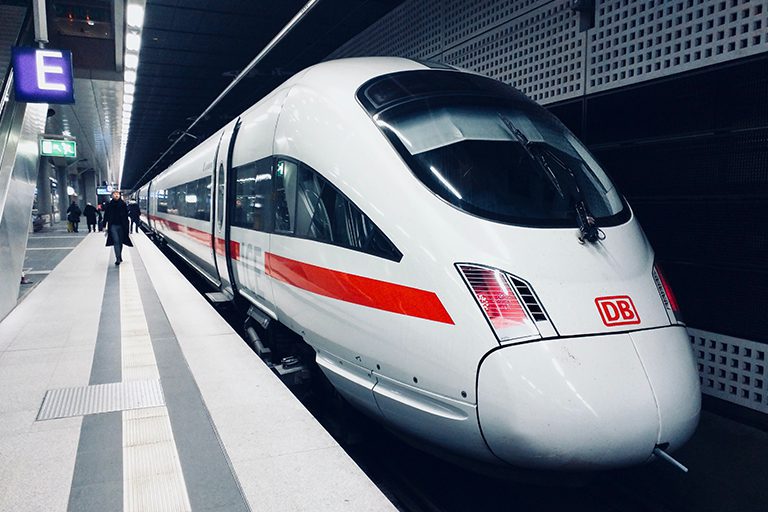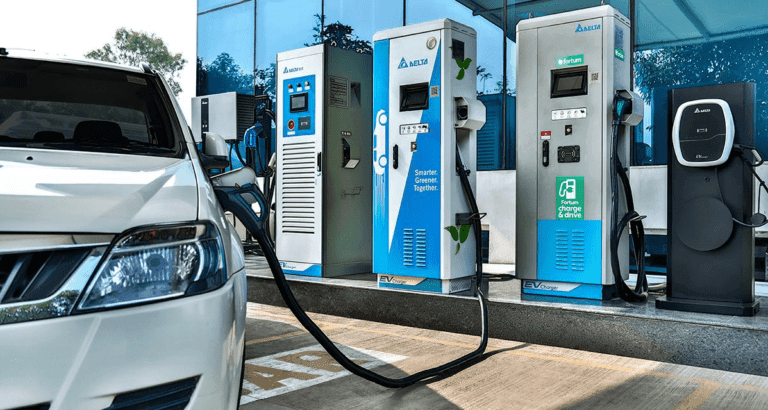
8 Reasons Bullet Trains Are a Greener Alternative to Air Travel

High-speed rail is rapidly emerging as one of the most sustainable transport solutions for long-distance travel. While planes still dominate global mobility for trips exceeding 500 kilometres, the environmental cost is becoming increasingly difficult to ignore.
Table of Contents
Air travel accounts for approximately 2.5% of global CO2 emissions and nearly 3.5% of total climate impact when contrails and nitrogen oxides are considered [ICCT]. In contrast, bullet trains powered by electricity can operate with a fraction of those emissions, especially when connected to renewable grids.

Here are seven ways bullet trains provide a greener and more sustainable alternative to air travel.
1. Lower Carbon Footprint
A passenger travelling on a high-speed train emits, on average, 14 grams of CO2 per kilometre, compared to 285 grams per kilometre on a plane [IEA]. For short to medium distances, this makes trains up to 20 times more efficient.
As countries increase renewable energy generation, the carbon intensity of trains will decline further, making them almost zero-emission transport options.
2. Reduced Air Pollution and Health Benefits
Planes not only emit CO2 but also nitrogen oxides and particulate matter that worsen urban air quality. Air pollution is already linked to 6.7 million premature deaths annually [WHO].
High-speed rail avoids direct combustion emissions, reducing smog and respiratory health risks, especially in regions with high air traffic. Cleaner air directly benefits cities and lowers healthcare costs.
3. Energy Efficiency Advantage
Aircraft engines burn vast amounts of kerosene to sustain flight, whereas bullet trains are designed for aerodynamics and regenerative braking.
According to the European Environment Agency, trains are seven times more energy efficient per passenger-kilometre than planes. This efficiency reduces energy demand and helps countries lower their dependency on imported fossil fuels.
4. Urban Development and Economic Opportunities
China’s extensive bullet train network has reshaped urbanization. By connecting megacities like Shanghai and Beijing with smaller towns, high-speed rail has reduced congestion, cut commuting times, and attracted investment into second-tier cities.
This decentralization relieves pressure on overpopulated cities and stimulates regional economies. For sustainable businesses, this shift creates new hubs of economic activity and greener markets for services.
5. Better Use of Land and Infrastructure
Airports require massive land, high energy consumption, and create noise pollution that disrupts communities. High-speed rail lines require less land per passenger moved and can integrate with existing urban transport.
For governments and businesses, this means a smaller ecological footprint while still enabling large-scale passenger movement.
6. Meeting Climate Goals
Global aviation emissions are projected to triple by 2050 if left unchecked. High-speed rail expansion is one of the fastest ways for countries to meet their net-zero targets. For example, France has already banned domestic flights on routes where trains can make the same journey in under 2.5 hours.
This sets a precedent for other countries balancing climate commitments with mobility needs.
7. A Competitive Edge for Sustainable Businesses
For businesses, choosing trains over flights is more than a carbon-saving measure. It signals commitment to sustainability and can strengthen ESG reporting.
Many companies now encourage employees to replace regional flights with trains where possible. Travel operators and event organizers are also redesigning models around rail-first travel, creating opportunities for startups in eco-tourism and green logistics.
8. Lifecycle Emissions and Infrastructure Impact
While building high-speed rail networks requires significant infrastructure, their lifecycle emissions per passenger remain far lower than those of aviation. Airports demand continuous high energy use for lighting, air conditioning, and security operations, while planes need constant fueling.
Once a rail system is operational, its emissions fall with every year of renewable energy integration and efficiency upgrades such as regenerative braking.
Bullet trains demonstrate how infrastructure can align mobility with climate goals. Their lower emissions, energy efficiency, and ability to reshape cities make them a cornerstone of sustainable transport. As more governments invest in rail over aviation, businesses that adapt early by integrating train travel into their operations and offerings will gain both environmental and competitive advantages.
For individuals and companies alike, the choice is clear. Taking the train over the plane is no longer just a travel preference. it is a climate responsibility.








